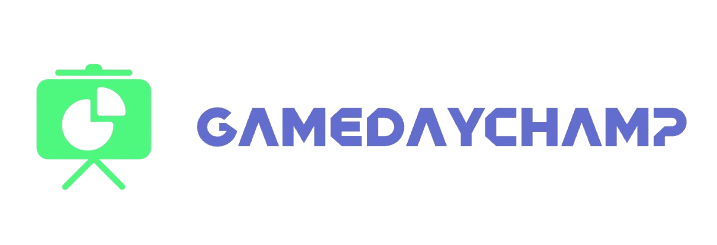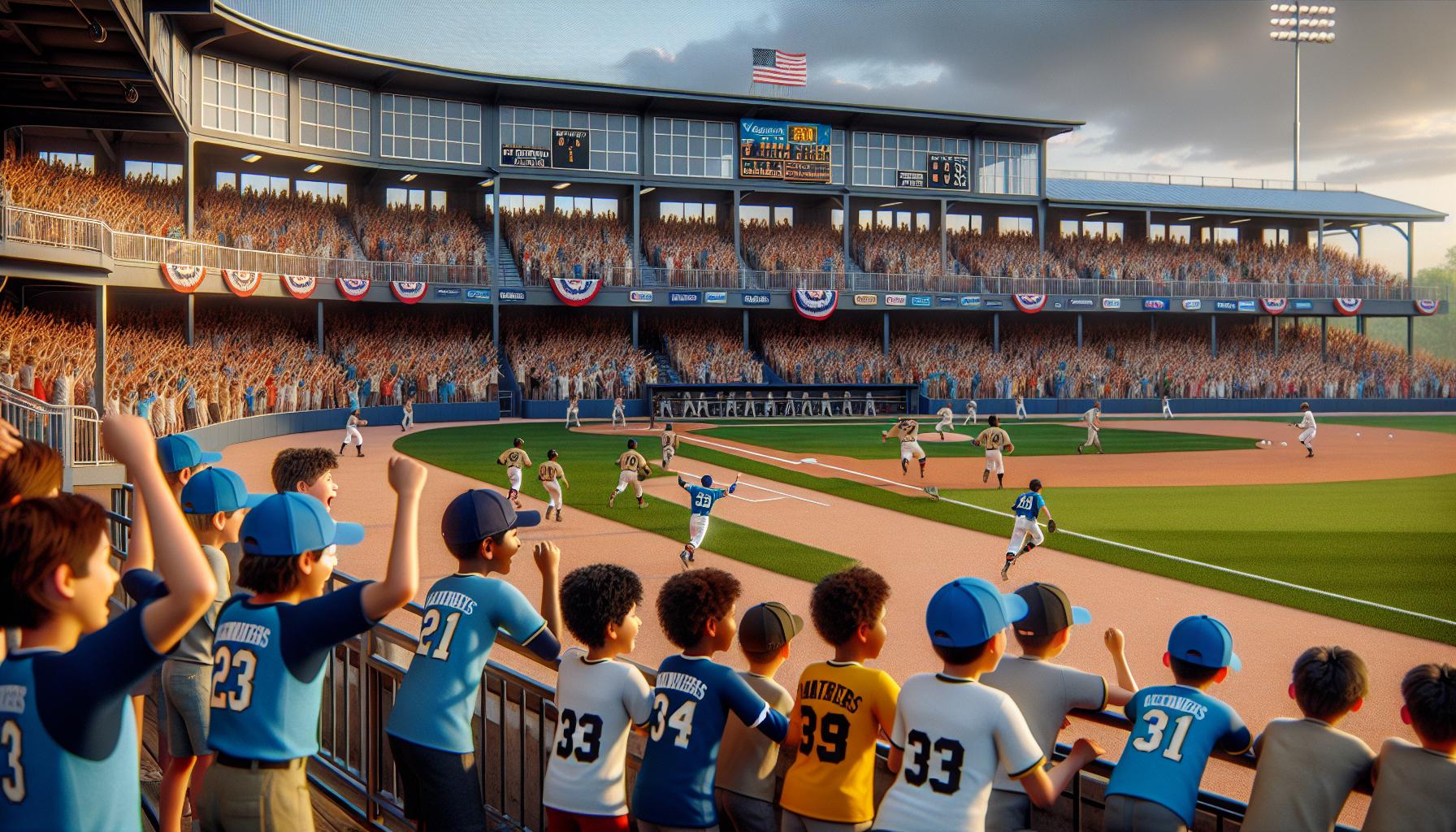As a passionate baseball fan, I’ve always been fascinated by the extensive network of minor league teams that serve as the backbone of America’s favorite pastime. While most fans focus on the 30 Major League Baseball teams, there’s an incredible system of developmental leagues operating just below the surface.
I’ve spent years tracking the evolving landscape of minor league baseball, and I can tell you it’s a complex but fascinating world. From Triple-A to Rookie leagues, these teams play a crucial role in developing future MLB stars while bringing affordable family entertainment to communities across North America. Whether you’re a die-hard baseball enthusiast or just curious about the sport’s infrastructure, understanding the number and distribution of minor league teams helps paint a complete picture of professional baseball in America.
Key Takeaways
- There are currently 271 total professional minor league baseball teams across all levels and classifications
- MLB has 120 officially affiliated teams spread across four classification levels: Triple-A (30 teams), Double-A (30 teams), High-A (30 teams), and Low-A (30 teams)
- Independent leagues feature approximately 90 teams across various organizations like the Atlantic League, American Association, Frontier League, and Pioneer League
- The minor league system includes 61 Rookie and Complex League teams focused on developing newly drafted players
- A major 2021 restructuring reduced MLB-affiliated teams from 160 to 120 while maintaining the core developmental levels
Understanding Minor League Baseball Structure
The minor league baseball system consists of multiple tiers working together to develop talent for Major League Baseball. I’ve researched the complete structure to provide accurate insights into both affiliated and independent leagues.
Major League Baseball Affiliates
Minor League Baseball includes 120 teams affiliated with MLB organizations across four classification levels. The Triple-A level features 30 teams serving as the final step before the major leagues. Double-A consists of 30 teams focused on developing promising prospects. High-A and Low-A each contain 30 teams dedicated to nurturing younger talent. Each MLB team maintains exactly one affiliate at each classification level, creating a standardized player development pipeline.
Independent League Teams
Independent leagues operate separately from MLB’s affiliated system, with 50+ teams across multiple organizations. The Atlantic League features 10 teams known for signing former MLB players. The American Association includes 12 teams primarily in the Midwest region. The Frontier League operates with 16 teams across the northeastern United States. The Pioneer League contains 10 teams throughout the Mountain states. These leagues provide additional opportunities for players outside the MLB system while bringing professional baseball to diverse markets.
| League Type | Number of Teams | Classification Levels |
|---|---|---|
| MLB Affiliated | 120 | 4 (Triple-A to Low-A) |
| Independent | 50+ | Varies by League |
| Atlantic League | 10 | Professional |
| American Association | 12 | Professional |
| Frontier League | 16 | Professional |
| Pioneer League | 10 | Professional |
Triple-A Baseball Teams
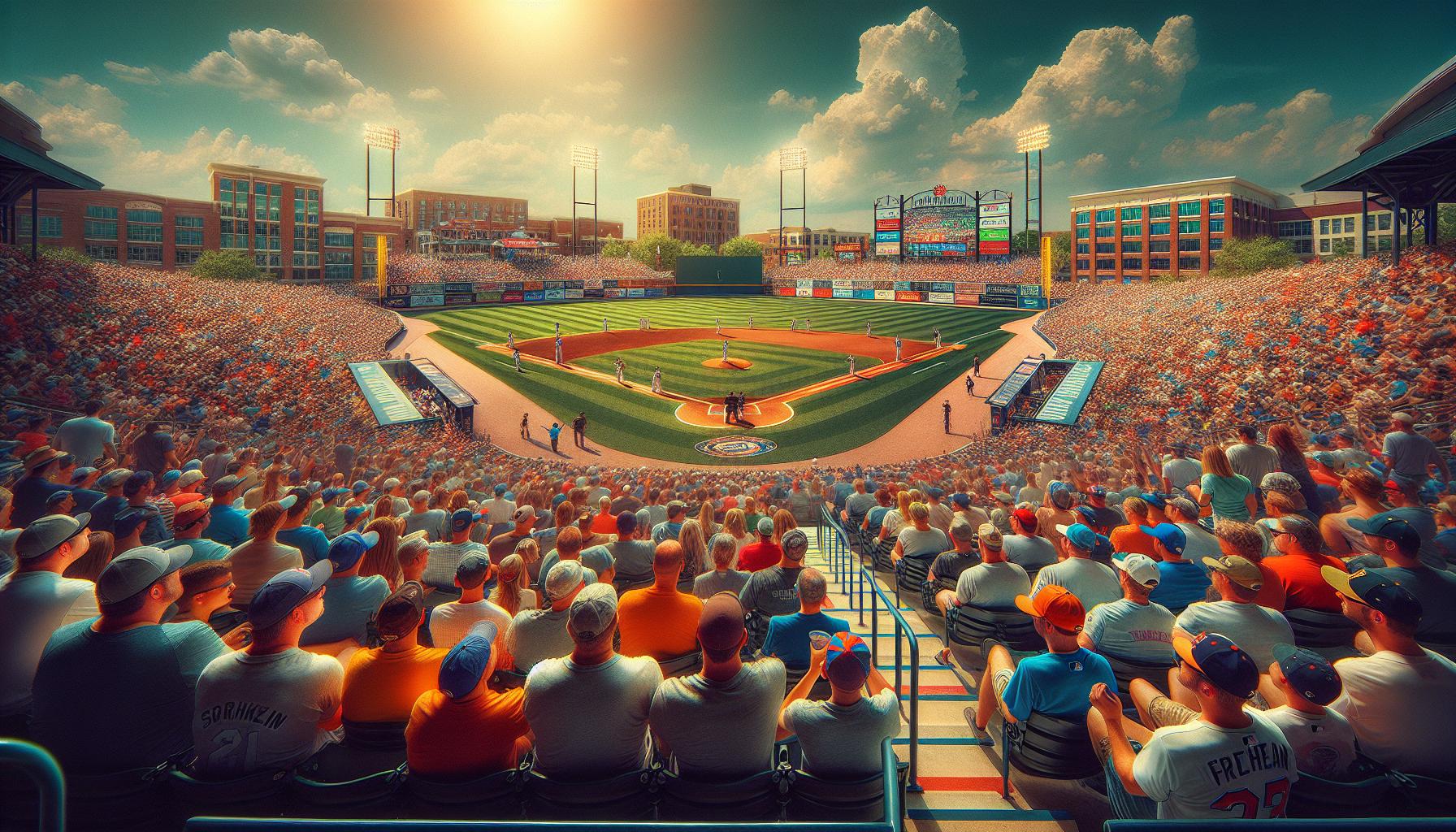
Triple-A baseball features 30 teams divided between two leagues. These teams represent the highest level of Minor League Baseball directly below MLB.
International League Teams
The International League consists of 20 Triple-A teams primarily located in the eastern United States. Here are the current teams:
- Buffalo Bisons (Toronto Blue Jays affiliate)
- Charlotte Knights (Chicago White Sox affiliate)
- Columbus Clippers (Cleveland Guardians affiliate)
- Durham Bulls (Tampa Bay Rays affiliate)
- Gwinnett Stripers (Atlanta Braves affiliate)
- Indianapolis Indians (Pittsburgh Pirates affiliate)
- Iowa Cubs (Chicago Cubs affiliate)
- Jacksonville Jumbo Shrimp (Miami Marlins affiliate)
- Lehigh Valley IronPigs (Philadelphia Phillies affiliate)
- Memphis Redbirds (St. Louis Cardinals affiliate)
- Nashville Sounds (Milwaukee Brewers affiliate)
- Norfolk Tides (Baltimore Orioles affiliate)
- Omaha Storm Chasers (Kansas City Royals affiliate)
- Rochester Red Wings (Washington Nationals affiliate)
- St. Paul Saints (Minnesota Twins affiliate)
- Scranton/Wilkes-Barre RailRiders (New York Yankees affiliate)
- Syracuse Mets (New York Mets affiliate)
- Toledo Mud Hens (Detroit Tigers affiliate)
- Worcester Red Sox (Boston Red Sox affiliate)
- Louisville Bats (Cincinnati Reds affiliate)
- Albuquerque Isotopes (Colorado Rockies affiliate)
- El Paso Chihuahuas (San Diego Padres affiliate)
- Las Vegas Aviators (Oakland Athletics affiliate)
- Oklahoma City Dodgers (Los Angeles Dodgers affiliate)
- Reno Aces (Arizona Diamondbacks affiliate)
- Round Rock Express (Texas Rangers affiliate)
- Sacramento River Cats (San Francisco Giants affiliate)
- Salt Lake Bees (Los Angeles Angels affiliate)
- Sugar Land Space Cowboys (Houston Astros affiliate)
- Tacoma Rainiers (Seattle Mariners affiliate)
Double-A Baseball Teams
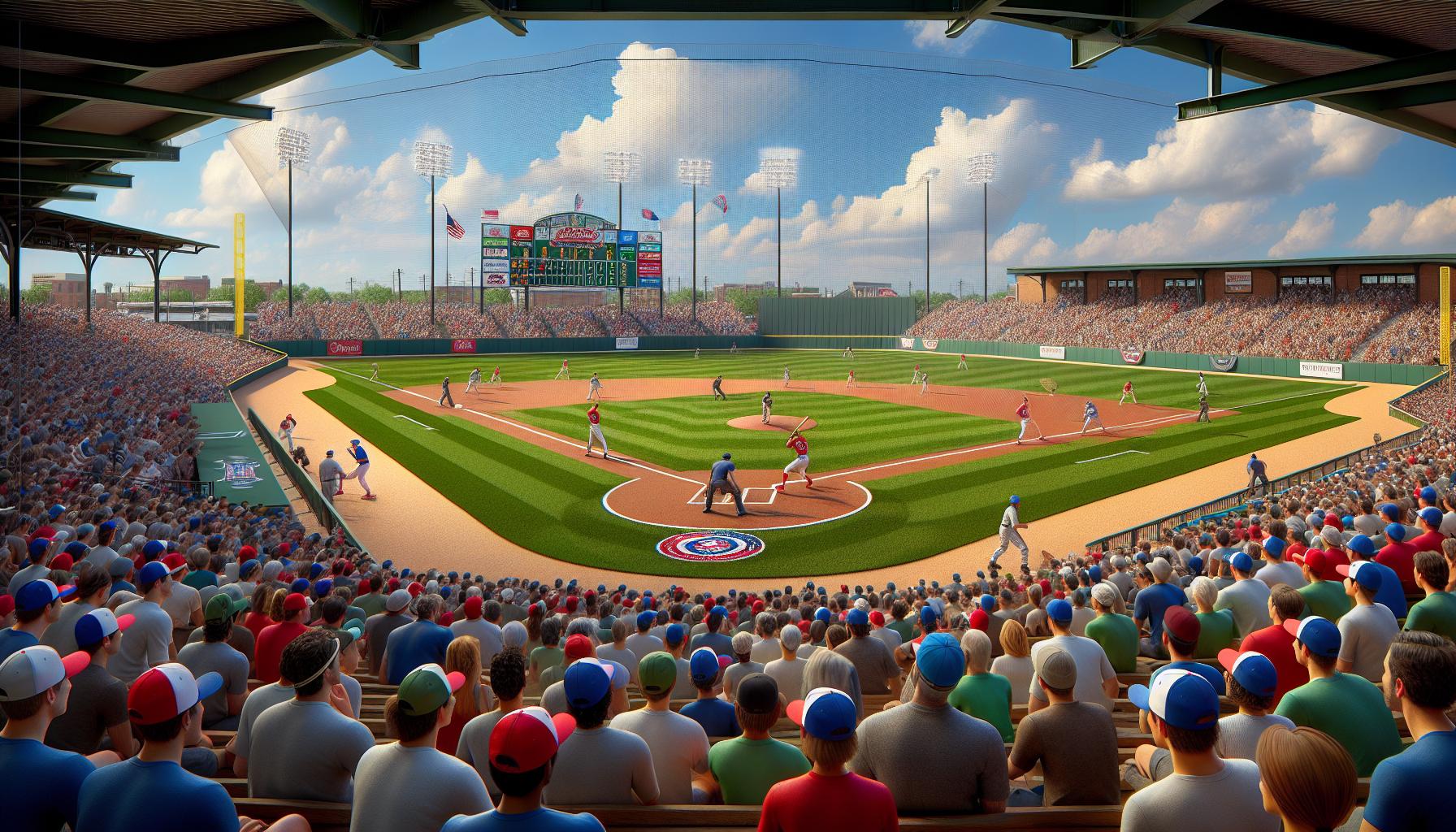
Double-A baseball features 30 teams distributed across three leagues: Eastern League Texas League & Southern League. Each league contains 10 teams serving as crucial developmental grounds for MLB prospects.
Eastern League Teams
The Eastern League operates primarily in the northeastern United States with these MLB-affiliated teams:
- Akron RubberDucks (Cleveland Guardians)
- Altoona Curve (Pittsburgh Pirates)
- Binghamton Rumble Ponies (New York Mets)
- Erie SeaWolves (Detroit Tigers)
- Harrisburg Senators (Washington Nationals)
- Hartford Yard Goats (Colorado Rockies)
- New Hampshire Fisher Cats (Toronto Blue Jays)
- Portland Sea Dogs (Boston Red Sox)
- Reading Fightin Phils (Philadelphia Phillies)
- Somerset Patriots (New York Yankees)
Southern League Teams
The Southern League spans across the southeastern United States featuring these teams:
- Biloxi Shuckers (Milwaukee Brewers)
- Birmingham Barons (Chicago White Sox)
- Chattanooga Lookouts (Cincinnati Reds)
- Mississippi Braves (Atlanta Braves)
- Montgomery Biscuits (Tampa Bay Rays)
- Pensacola Blue Wahoos (Miami Marlins)
- Rocket City Trash Pandas (Los Angeles Angels)
- Tennessee Smokies (Chicago Cubs)
- Biloxi Shuckers (Milwaukee Brewers)
- Mississippi Braves (Atlanta Braves)
- Amarillo Sod Poodles (Arizona Diamondbacks)
- Arkansas Travelers (Seattle Mariners)
- Corpus Christi Hooks (Houston Astros)
- Frisco RoughRiders (Texas Rangers)
- Midland RockHounds (Oakland Athletics)
- Northwest Arkansas Naturals (Kansas City Royals)
- San Antonio Missions (San Diego Padres)
- Springfield Cardinals (St. Louis Cardinals)
- Tulsa Drillers (Los Angeles Dodgers)
- Wichita Wind Surge (Minnesota Twins)
Single-A Baseball Teams
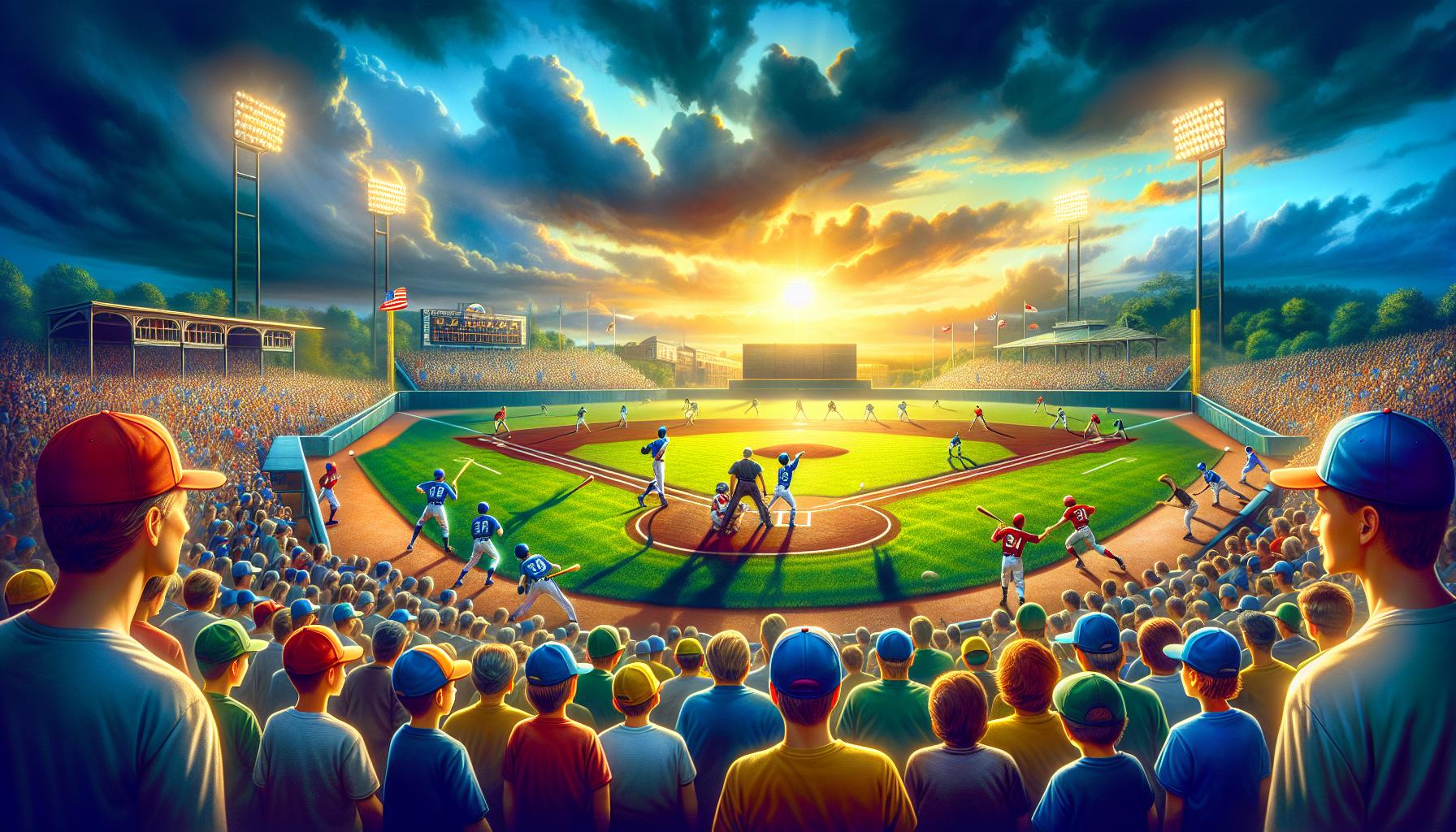
Single-A baseball consists of 60 teams split evenly between High-A and Low-A classifications, serving as essential developmental levels for young prospects in professional baseball.
High-A Teams
High-A baseball features 30 teams across three leagues: the Midwest League, Northwest League, and South Atlantic League. The Midwest League includes 12 teams like the Cedar Rapids Kernels (Minnesota Twins) and Fort Wayne TinCaps (San Diego Padres). The Northwest League operates with 6 teams, including the Eugene Emeralds (San Francisco Giants) and Vancouver Canadians (Toronto Blue Jays). The South Atlantic League consists of 12 teams such as the Aberdeen IronBirds (Baltimore Orioles) and Brooklyn Cyclones (New York Mets).
Low-A Teams
Low-A baseball comprises 30 teams divided between two leagues: the California League and Carolina League. The California League features 8 teams, including the Fresno Grizzlies (Colorado Rockies) and Modesto Nuts (Seattle Mariners). The Carolina League operates with 12 teams across the southeastern United States, such as the Augusta GreenJackets (Atlanta Braves) and Charleston RiverDogs (Tampa Bay Rays). These teams focus on developing raw talent and introducing young players to professional baseball’s demands.
| League | Number of Teams | Notable Examples |
|---|---|---|
| Midwest League | 12 | Cedar Rapids Kernels, Fort Wayne TinCaps |
| Northwest League | 6 | Eugene Emeralds, Vancouver Canadians |
| South Atlantic League | 12 | Aberdeen IronBirds, Brooklyn Cyclones |
| California League | 8 | Fresno Grizzlies, Modesto Nuts |
| Carolina League | 12 | Augusta GreenJackets, Charleston RiverDogs |
Rookie and Complex Leagues
The Rookie and Complex leagues represent the entry level of Minor League Baseball with 61 teams focused on developing newly drafted players. These leagues operate during a shorter season from June to September.
Arizona Complex League Teams
The Arizona Complex League consists of 18 teams based at MLB spring training facilities across Arizona. Each team adopts the name of its parent MLB club:
| Division | Teams |
|---|---|
| East | Angels Cubs D-backs Guardians Giants Rangers |
| Central | Athletics Brewers Dodgers Padres Rockies White Sox |
| West | Mariners Reds Royals Giants Orange Royals Blue Cubs Blue |
Florida Complex League Teams
The Florida Complex League features 43 teams operating out of MLB spring training sites in Florida. Like their Arizona counterparts, teams use their MLB affiliate names:
| Division | Teams |
|---|---|
| North | Astros Blue Jays Cardinals Marlins Mets Nationals Yankees East Yankees West |
| South | Braves Pirates Red Sox Blue Red Sox Red Rays Tigers East Tigers West |
| East | Orioles Black Orioles Orange Phillies Twins |
| West | Pirates Gold Pirates Black Rays Red Rays Navy |
The teams play their games at professional training complexes with limited public access. Games typically start at noon to accommodate player development activities while avoiding Florida’s afternoon thunderstorms.
Total Number of Minor League Teams
Minor League Baseball encompasses 271 professional baseball teams across various classifications. This comprehensive network includes both MLB-affiliated teams and independent league organizations.
Affiliated vs Independent Teams
The minor league system consists of 120 MLB-affiliated teams operating across four primary classifications:
- Triple-A: 30 teams (International League & Pacific Coast League)
- Double-A: 30 teams (Eastern League, Texas League & Southern League)
- High-A: 30 teams (Midwest League, Northwest League & South Atlantic League)
- Low-A: 30 teams (California League & Carolina League)
- 61 Rookie & Complex League teams
- 8 Atlantic League teams
- 12 American Association teams
- 16 Frontier League teams
- 10 Pioneer League teams
- 44 teams in other independent leagues
| Classification | Number of Teams | Leagues |
|---|---|---|
| Triple-A | 30 | 2 |
| Double-A | 30 | 3 |
| High-A | 30 | 3 |
| Low-A | 30 | 2 |
| Rookie/Complex | 61 | 2 |
| Independent | 90 | 5+ |
Changes in Minor League Baseball
Minor League Baseball underwent significant restructuring in 2021, marking the most substantial reorganization in over 50 years of professional baseball.
Recent League Restructuring
MLB’s reorganization eliminated 40 affiliated teams in 2021 while implementing standardized facility requirements for remaining clubs. The restructuring disbanded the Appalachian League as an MLB-affiliated circuit, converting it to a collegiate summer league. Several former affiliated teams transitioned to independent leagues:
- Lexington Legends joined the Atlantic League
- Kane County Cougars moved to the American Association
- Southern Maryland Blue Crabs entered the Atlantic League
- Staten Island Yankees ceased operations
- Trenton Thunder became an MLB Draft League team
Impact on Total Team Count
The restructuring reduced the total number of MLB-affiliated minor league teams from 160 to 120. Here’s the breakdown of changes:
| Classification Level | Pre-2021 Teams | Post-2021 Teams | Net Change |
|---|---|---|---|
| Triple-A | 30 | 30 | 0 |
| Double-A | 30 | 30 | 0 |
| Class A-Advanced | 30 | 30 | 0 |
| Class A | 30 | 30 | 0 |
| Short-Season A | 22 | 0 | -22 |
| Rookie Advanced | 18 | 0 | -18 |
The elimination focused primarily on short-season leagues while maintaining the core developmental levels from Triple-A through Low-A. This restructuring created a more streamlined player development system with enhanced facility standards across all remaining teams.
Conclusion
The minor league baseball system stands as a testament to America’s enduring love for the sport. With 271 professional teams spread across various classifications I’ve found that each league serves a unique purpose in developing tomorrow’s MLB stars.
From the bright lights of Triple-A ballparks to the intimate settings of Rookie leagues I’m continually amazed by how this extensive network shapes the future of baseball. Whether you’re a die-hard fan or just discovering the sport I encourage you to explore the rich tapestry of minor league baseball in your area.
Minor league baseball isn’t just about player development – it’s about bringing communities together and keeping the spirit of America’s pastime alive at every level of play.
